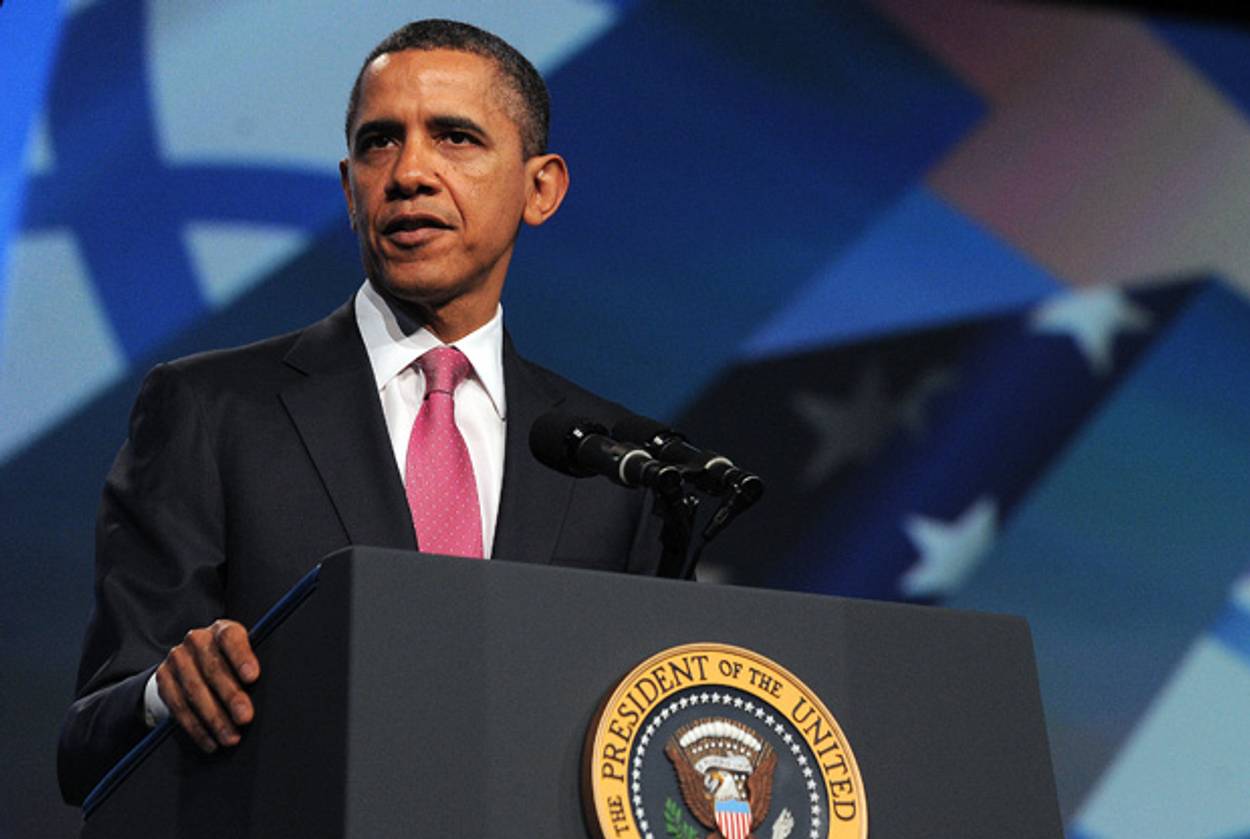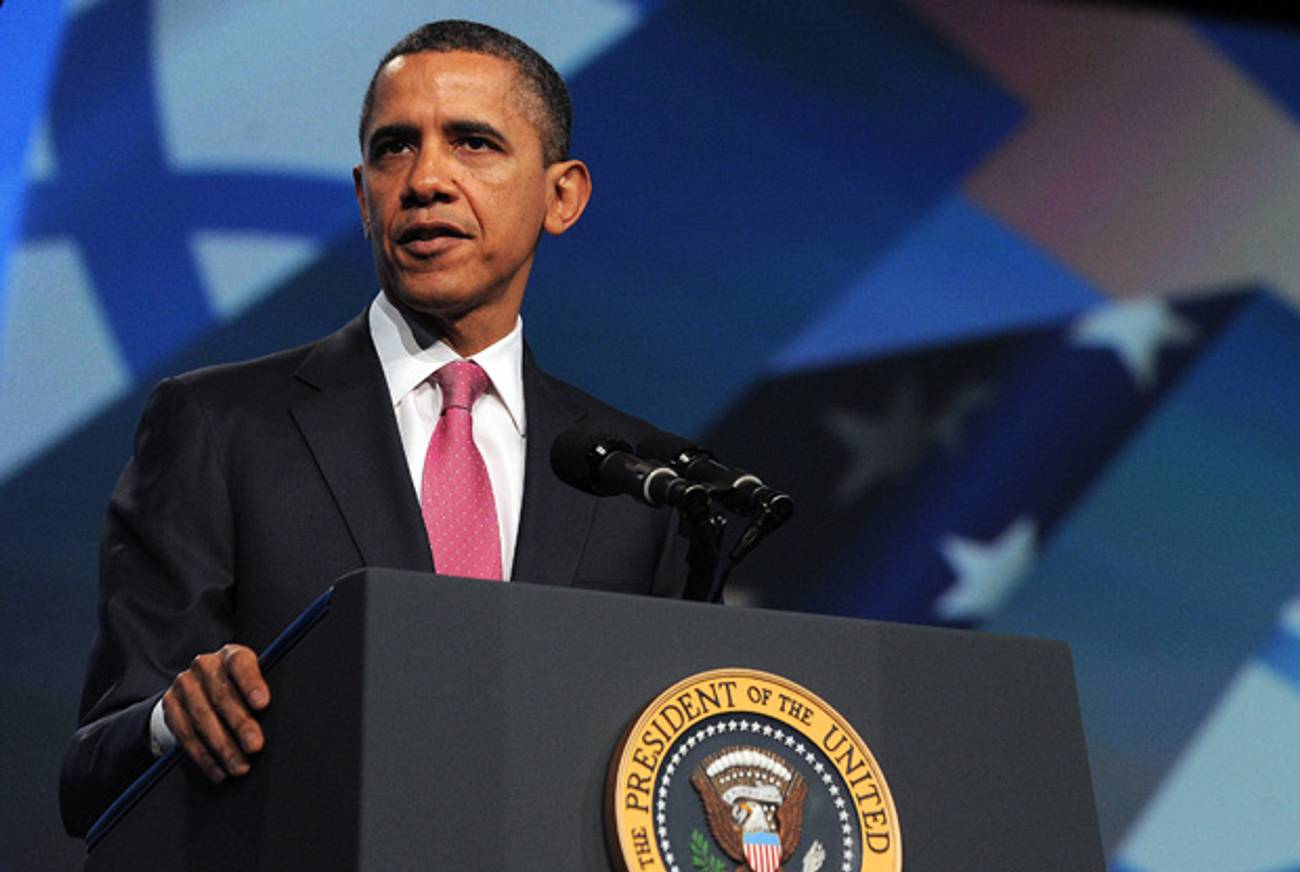Obama Fails to Second Red Line
Speaking at AIPAC conference, president moves closer to Israeli position on Iran—but not all the way there—ahead of meeting with Netanyahu




In his speech yesterday to the AIPAC Policy Conference, President Obama moved closer to Prime Minister Netanyahu’s position, but not all the way there. And though AIPAC leaders praised the president’s speech, he declined to lend support to the group’s insistence that a weapons-capable—as opposed to weapons-desiring—Iran would constitute a U.S. red line. Tellingly, Haaretz reports that Obama and Netanyahu will not issue a joint statement following their White House meeting today: something that observers had optimistically suggested would represent a real breakthrough.
“Obama’s efforts to recalibrate the administration’s position … won some applause, including from the Israeli leader,” reported the Wall Street Journal. Indeed, in Ottawa, Canada, yesterday, Netanyahu said he “appreciated” Obama’s emphasis that military force is something more than just a rhetorical “last resort.”
“I have said that when it comes to preventing Iran from obtaining a nuclear weapon, I will take no options off the table, and I mean what I say,” Obama declared yesterday. “That includes … yes, a military effort to be prepared for any contingency.”
David Makovsky, of the Washington Institute for Near East Policy, identified to Tablet Magazine three new elements that Obama codified in yesterday’s speech: that taking military action on its own “is a sovereign decision for Israel;” that “containment won’t work;” and that “all options really are on the table.”
But for many Republicans, it was not enough. Rep. Eric Cantor, the Jewish House Majority Leader who held court in front of the podium after Obama’s speech, called the address “a step in the right direction,” but added, “We need to make sure that this president is also going to stand by Israel and not allow his administration to somehow speak contrary to what our ally thinks is in its best interest.”
And a quick look at AIPAC’s talking points on the Iran threat—which closely mirror those of Netanyahu—reveal that the president did not adopt them. As I reported yesterday, AIPAC and Netanyahu would like to see the red line shifted from an Iran that has both the ability to produce a nuclear weapon and that has made the decision to do so (or perhaps that has kicked out international inspectors so as to keep the world community in the dark on the latter) to an Iran that has the ability to produce a usable device in a short period of time. “If Iran achieves the status of a ‘threshold’ nuclear state,” the talking points declare, “it will enjoy virtually the same benefits as if it actually possessed nuclear weapons.”
Yet in his speech yesterday, Obama pointedly implied the possibility of Iran continuing to simply decide not to make a weapon: “The United States and Israel both assess that Iran does not yet have a nuclear weapon, and we are exceedingly vigilant in monitoring their program,” he said.
The next tea leaves will come this afternoon during and after the White House visit. Makovsky advised that observers look for statements of common red lines.
“I tend to believe this was an important prelude,” he commented of Obama’s speech. “We’ll have to see if there’s enough of a common ground.”
Obama, Netanyahu Brace for Fateful White House Meeting on Iran [Haaretz Diplomania]
‘Loose Talk of War’ Only Helps Iran, President Says [NYT]
Obama Shifts Toward Israel on Iran [WSJ]
Don’t Worry America, Israel Is Behind You [Forecast Highs]
Earlier: AIPAC Urges U.S. Shift to Iranian ‘Capability’
Marc Tracy is a staff writer at The New Republic, and was previously a staff writer at Tablet. He tweets @marcatracy.